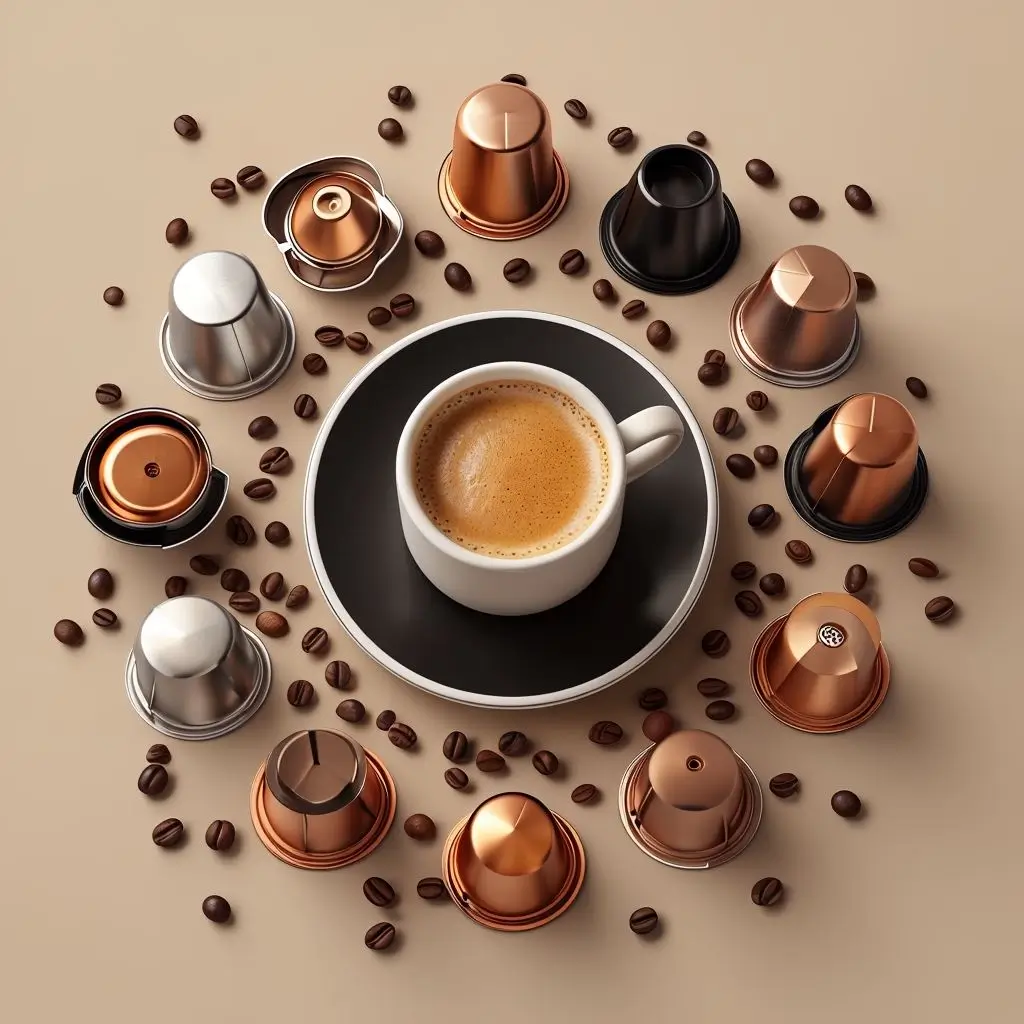Are Coffee Pods Size Standard for all Coffee Maker?
Do you have knowledge, Are coffee pods size standerd for all coffee maker? Coffee pods have changed the way we drink coffee by offering convenience speed, speed, and a wide range of tastes at the touch of the button. But, as the demand that coffee pods have gained has increased and so has the complexity of getting around the market. One of the biggest problems faced by coffee lovers is the lack of a standardization in the size of coffee pods and they are not compatible with the coffee maker.
This article explores the reasons behind this lack of standardization, its impact on consumers, and the potential solutions available.

Understanding Coffee Pods Size standard and Their Types
Before tackling the topic of standardization it is important to know the definition of coffee pods and the various types of coffee pods that are available. Coffee pods are packaged portions of ground coffee that are sealed in a container specifically designed to be used with certain coffee makers. They come in different sizes, shapes and materials, based on the maker and brand. method.
Popular Coffee Pod Types
K-Cups designed specifically for Keurig machines K-Cups are tiny plastic pods that come with an aluminum lid. They are extremely used across the U.S. and offer a range of flavors and brands.
Nespresso Capsules: Nespresso offers two major capsules types:
ESEPods (Easy serving espresso): Made from biodegradable papers, these pods serve as espresso machines, and are more green.
Each pod type has its own size shape, form and compatibility. This leads us to the question regarding standardization.

Why Coffee Pod Sizes Are Not Standardized?
The lack of uniformity in the size of coffee pods is a deliberate decision by makers, driven by various reasons:

Brand-Specific Designs
Big coffee maker brands like Keurig, Nespresso, and Dolce Gusto have developed proprietary pod systems that have created distinct markets to sell their coffee. This helps ensure that customers remain loyal to their brands, because switching to a new pod design usually requires the new coffee maker.

Market Competition
The market for coffee pods is very competitive, and many brands utilize unique designs for their pods to distinguish them. This allows them to provide distinctive features, flavours and brewing methods that differentiate them from the competition.

Technological Differences
Different coffee brewing methods require different pod shapes to get the best outcomes. For instance, Nespresso’s OriginalLine capsules are specifically designed for extraction of high pressure espresso and Keurig’s K-Cups are designed to work with drip coffee.

Economic Strategy
By enforcing consumers to use the specific pod system the manufacturers can guarantee that their pods are sold on a regular basis that are usually sold at a higher price. This model of business discourages the standardization of products, since it will limit the control and exclusivity brands enjoy over their products

Lack of Industry Regulations
There are no regulations for the industry requiring the standardization of pod sizes for coffee. In the absence of rules, coffee makers can design their pods according to their personal specifications and business plans.
The Impact of Non-Standardized Coffee Pod Sizes
The lack of standardization in coffee pod sizes has both advantages and disadvantages for consumers and the industry.
Advantages

Variety and Innovation
Non-standardization allows brands to innovate and offer a wide range of flavors, brewing strengths, and specialty coffee options. This enhances the overall coffee experience for consumers

Brand Differentiation
Unique pod designs help brands stand out in a crowded market, fostering competition and driving improvements in quality and technology
Disadvantages

Compatibility Issues
Consumers often face challenges when trying to use pods from one brand with a coffee maker from another. This limits flexibility and can be frustrating

Environmental Concerns
Different pod designs complicate recycling efforts, as each type may require a unique recycling process. This contributes to waste and environmental degradation

Higher Costs
Consumers may need to invest in multiple coffee makers to enjoy pods from different brands, increasing overall costs

Consumer Confusion
The variety of pod types can be overwhelming, especially for new users, leading to potential dissatisfaction
The Future of Coffee Pod Standardization
The industry of coffee pods is at an impasse. Although the absence of a standardization system allows for creativity as well as variety poses a challenge for consumers as well as the environment. As sustainability becomes a bigger issue, companies may have reconsider their plans.
Potential Developments

Industry-wide standards
The development of standards across the industry for pod sizes could ease recycling and compatibility efforts which will benefit both the consumer as well as the environment.

The increased use of reusable pods
As awareness of environmental issues increases the use of reusable pods will be the norm, which will reduce the use of single-use options.

Consumer advocacy
Increased demand from consumers for sustainability and compatibility may force companies to adopt more standardized processes.
Industry Movements Towards Standardization
The market for coffee pods isn’t standardized however, there are ideas and developments that may help to ensure greater compatibility in the coming years:
Sustainability Efforts
The increasing demand for environmentally friendly products is prompting businesses to look into standardization as a method for reducing waste as well as enhance recycling capabilities. Standardized pod sizes can simplify recycling procedures and allow customers in disposing of their pods in a responsible manner.
Technological Innovations
Certain companies are looking at ways to create coffee pods that are to be more widely compatible. In particular adapters, reusable pods and adapters are being designed to bridge the gap between various systems.
Consumer Demand
As people become more aware of financial and environmental consequences of pods that are not standardized There is growing demand on pod manufacturers to provide more sustainable and compatible options.
Solutions for Consumers
Despite the difficulties caused by the non-standardization of size of coffee pods There are a variety of alternatives available to consumers.
Reusable Coffee Pods
Reusable pods, constructed of either stainless steel, or plastic that is BPA free are filled with coffee grounds and reused multiple times. They can be used with different coffee makers, and drastically reduce the amount of waste.
Adapters
Adapters permit some coffee makers utilize pods of different brands, thus increasing their versatility and decreasing the need to have multiple machines. But their effectiveness is different dependent on the type of model of the machine and the type of pod.
Biodegradable and Compostable Pods
For those who are concerned about the environmental impact, compostable and biodegradable pods are a greener alternative. They are made of materials that break down quickly, which reduces their impact on the environment.
Recycling Programs
Certain brands, such as Nespresso provide recycled pods. Customers can send used pods to the brand to ensure proper recycling. This helps to reduce the impact of environmental impact.
Conclusion
In short, the lack of standardization in coffee pod sizes is a double-edged sword. While it can allow for innovation and the possibility of variety, it also poses issues regarding compatibility, cost and environmental impact. If you are a lover of coffee Understanding these issues will help you make educated choices when selecting the best the best coffee maker as well as pods.
Whether you choose to use reused pods, look into adapters or recycled programs. There’s methods to get through the maze of the market for coffee pods. As the market evolves, we could see an evolution towards more standardization, which will make it easier for everyone to have the perfect beverage.

